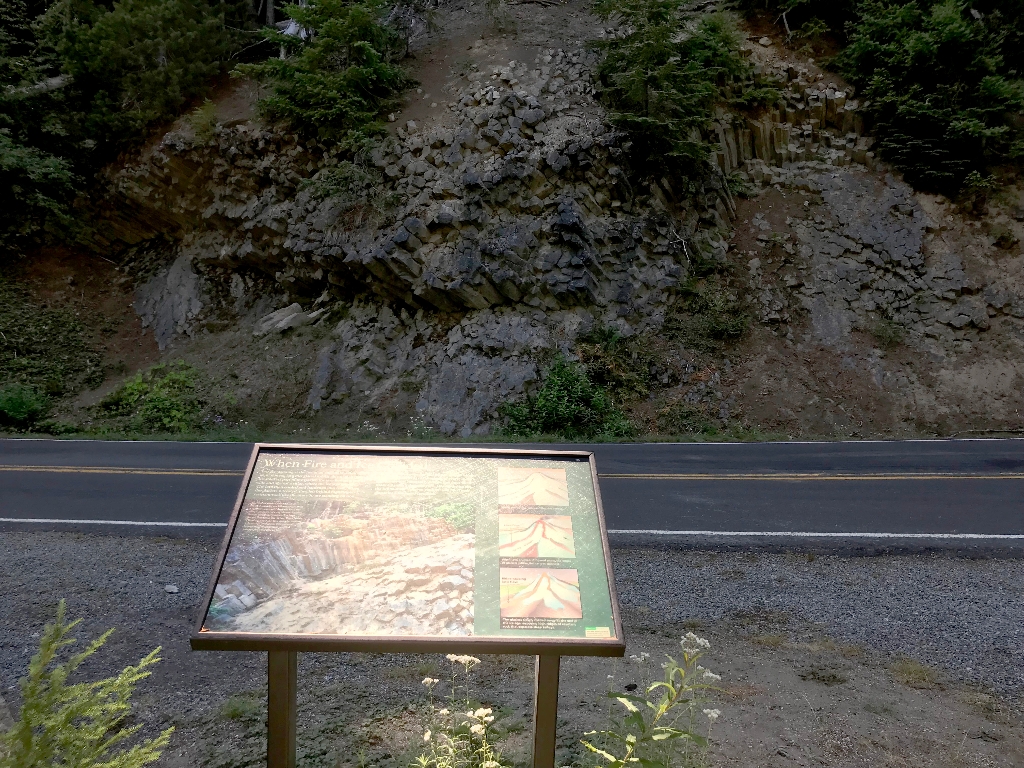
Title: When Fire and Ice Collided
Main Text
You are standing at the toe of an ancient lava flow. Here flowing lava met glacial ice. Unable to melt through the thickest part of the glacier, the lava flowed along its side and against a ridge, where the ice was thinnest. The lava then cooled and hardened into rock. When the glaciers retreated, they left behind high ridges of resistant rock like the one you are standing on now.
The struggle between fire and ice has shaped Mount Rainier for hundreds of thousands of years. Today's glaciers are tiny remnants of those that once filled Mount Rainier's deep canyons. During the ice age, the White River Valley to your left was filled with glacial ice a thousand feet thick.
Secondary Text
The interaction of fire and ice also created unusual rock formations. Half a million years ago, adesite lava, the most common type on Mount Rainier, flowed along the margin of a large glacier that filled the White River Valley. The ice cooled the lava quickly, causing it to shrink and crack into narrow hexagonal columns that pointed toward the cool glacial ice.
Exhibit Panel Description
The main text stretches across the top third of the panel on the left side, with a large photo underneath it. The photo shows a detail of the columnar lava formation, an exposed section of rock with numerous hexagonal column fractures. The secondary text is located in the upper left corner of the photo. A series of three simplified graphics forms a column on the right side of the exhibit panel. The top graphic shows a mountain covered with glaciers that descend into valleys around the mountain and divided by thin ridges. Text under the graphic reads: "During the ice age, glaciers filled the valleys". The middle graphic shows the same glacier-covered mountain with lava flowing from the summit and being channeled between the valley glaciers along the top of the ridges. Text reads: "When lava erupted, it flowed along the edges of glaciers where the ice was thinnest." The bottom graphic shows the mountain with the glaciers retreated up-valley. An arrow, labeled "Ridge-capping lava flow" points out the cooled lava flow left behind along the original ridge line. Text under the graphic reads: "The glaciers slowly melted away at the end of the ice age, exposing high ridges of resistant rock that separate deep valleys." A small box in the lower right corner of the panel reads "User Fee Project. Your Fee Dollars at Work. Entrance fees were used to produce this exhibit".
Visit This Exhibit Panel
This exhibit panel is located in a pullout 2.3 miles up the Sunrise Road. The Sunrise Road is open to vehicles during the summer, typically from early July to September.
Is there something we missed for this itinerary?
Itineraries across USA


















































